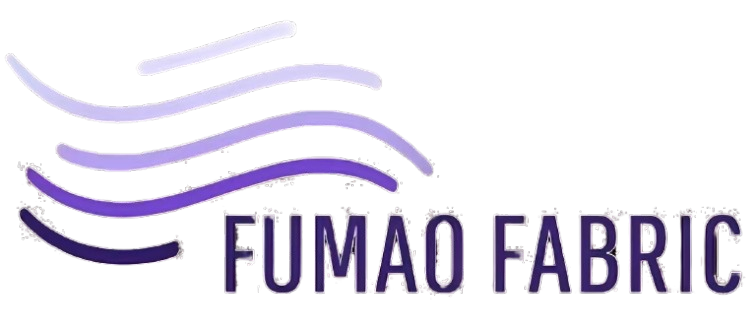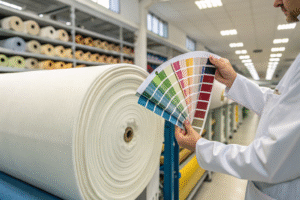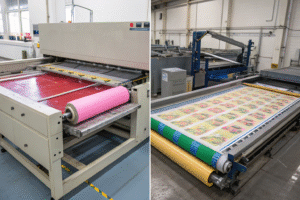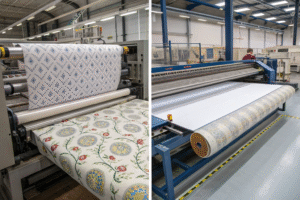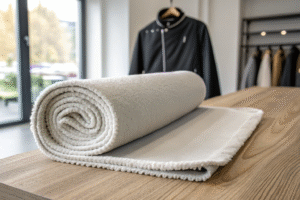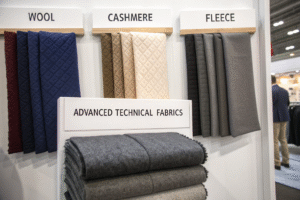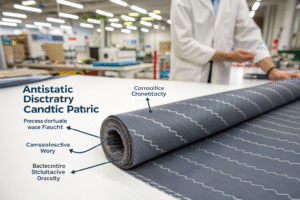Winter demands more than just heavy fabrics—it calls for performance insulation that traps body heat, repels moisture, and resists wind. Whether outfitting consumers in sub-zero temperatures or sourcing fabrics for a new outerwear line, the challenge lies in identifying materials that balance warmth, comfort, weight, and price. As a leading fabric supplier in Asia, I’ve worked with clients across the U.S. and Europe who expect premium thermal performance with fast lead times.
The best thermal insulation fabrics for winter outerwear combine advanced materials like Thinsulate™, PrimaLoft®, and soft-shell fleece with classic insulators like wool and down. Choosing the right material depends on your climate, end-use, and desired garment weight.
From military-grade synthetics to naturally insulating alpaca and wool blends, we at Fumao Fabric navigate both traditional and tech-forward options daily. Let’s explore which insulation fabrics stand out and why smart buyers prioritize certifications, warmth-to-weight ratios, and functional finishes when choosing winter textiles.
Which Synthetic Insulation Fabrics Offer the Best Warmth-to-Weight Ratio?
Synthetic insulations dominate the technical outerwear world for good reason. They're lightweight, reliable in wet conditions, and often less bulky than traditional fills. Leading brands like Patagonia, The North Face, and Columbia all rely on these performance-driven synthetics.
When it comes to balancing weight and thermal efficiency, PrimaLoft® and Thinsulate™ consistently outperform traditional polyester batting. They're breathable, packable, and water-resistant—ideal for high-performance winter outerwear.

Why Is PrimaLoft® Preferred in Technical Outerwear?
Originally developed for the U.S. Army, PrimaLoft® is a synthetic microfiber that mimics the structure of down while maintaining insulation when wet. Unlike cheaper polyfills, it doesn't clump or lose loft. Brands like Arc’teryx and L.L. Bean use PrimaLoft because it's soft, compressible, and breathable, making it perfect for performance winter gear.
Notably, PrimaLoft® Gold has the highest warmth-to-weight ratio among synthetics. It’s also bluesign® approved and available in recycled variations, aligning with today’s sustainability trends.
Is Thinsulate™ Still Relevant for Modern Outerwear?
3M’s Thinsulate™ remains a staple in snow boots, gloves, and jackets due to its fine microfiber structure. It's extremely thin yet traps a lot of air, which makes it warmer without the bulk. It's less compressible than PrimaLoft but excels in rugged, cold-weather utility gear.
With multiple weight grades (like 40g, 100g, 200g), Thinsulate allows flexibility in warmth without redesigning your silhouette. We’ve shipped Thinsulate-compatible linings to multiple U.S. clients producing tactical wear and hunting jackets.
How Does Wool Compare to Modern Thermal Fabrics?
Wool has been used for centuries in cold climates, and despite modern innovations, it’s still a favorite for upscale and casual winter outerwear.
Wool’s insulating capacity comes from its natural crimps, which trap warm air. It’s breathable, odor-resistant, and provides excellent warmth—even when wet.

Is Merino Wool Warm Enough for Harsh Winters?
Absolutely. Merino wool is finer and softer than traditional wool, making it ideal for base layers, midlayers, and outerwear. It regulates temperature exceptionally well, providing warmth without overheating. For U.S. buyers targeting active winter wear, merino-lined jackets offer luxury performance with a sustainability edge.
We export large rolls of merino wool blends to Europe and North America, often for high-end brands seeking both performance and visual elegance.
What About Wool Blends Like Wool-Cashmere or Wool-Poly?
Blending wool with cashmere or synthetic fibers increases softness or durability. For example, wool-poly blends are less expensive and easier to maintain, making them ideal for mass-market winter coats. Meanwhile, wool-cashmere blends target the premium coat market, offering unmatched softness.
We help clients compare GSMs, handfeel, and cost-efficiency across blends, often recommending OEKO-TEX® certified wool mixes to support both comfort and compliance.
Are Down and Down Alternatives Still Industry Standards?
Down’s warmth-to-weight ratio is legendary, which is why it remains a benchmark in the insulation space. However, supply chain transparency and allergy risks have pushed more buyers toward synthetic or recycled alternatives.
Premium goose down offers exceptional loft and compressibility. Yet, many brands now seek RDS-certified down or recycled polyester fillings to meet consumer expectations for ethical and vegan options.

Is Goose Down Still the Warmest Option?
Yes, goose down with high fill power (e.g., 800–900 FP) remains one of the warmest, lightest insulators available. It’s ideal for luxury coats and expedition outerwear. However, the ethical considerations around live-plucking and animal treatment have prompted more buyers to demand Responsible Down Standard (RDS) certifications.
Fumao Fabric partners with RDS-certified down suppliers and also offers downproof shell fabrics in nylon and polyester blends.
What Are the Best Down Alternatives for Winter Apparel?
EcoDown®, Thermore®, and Sorona® by DuPont are popular down alternatives used in sustainable jackets. They’re made from recycled PET bottles and mimic the softness and thermal performance of natural down. These materials are easier to clean, hypoallergenic, and machine-washable.
We recommend them to clients selling to vegan-conscious or eco-friendly markets, especially in the U.S. and Germany, where demand for ethical fashion is surging.
What Role Do Fabric Finishes Play in Thermal Performance?
Thermal insulation doesn’t work in isolation. Fabric finishes—whether laminated membranes or nanotech coatings—determine if the garment traps warmth or loses it to the elements.
Windproof, waterproof, and breathable coatings preserve the thermal benefits of the insulating layer underneath. These smart finishes keep moisture out, enhance durability, and improve wearability.

Do Coated or Laminated Fabrics Improve Insulation?
Definitely. Coatings like PU or PTFE (Gore-Tex®) help retain body heat by creating a windproof, waterproof barrier. When combined with breathable insulation inside, the result is superior comfort and performance. Gore-Tex shells paired with Primaloft Gold insulation are common in ski jackets and outdoor gear.
At Fumao, we also offer TPU-coated nylon, softshell with DWR finish, and multi-layer bonded fabrics tailored for active winter markets.
How Important Are QR-Tracked Test Reports for Buyers?
With so many finishes and claims, buyers increasingly demand proof. We use QR code tracking systems to log and verify tests for water resistance, vapor permeability, and thermal retention. Our CNAS-accredited lab ensures every coated fabric meets international standards (SGS, ITS), and buyers can scan the code to view full reports—enhancing trust and efficiency.
Conclusion
Choosing the right thermal insulation fabric means aligning warmth, weight, functionality, and sustainability with market needs. Whether your customers prefer technical synthetics, luxurious wool blends, or ethical down alternatives, knowing what each fabric offers is key to profitable sourcing.
As a Keqiao-based manufacturer and exporter, we help brands worldwide—from outdoor gear startups to premium coat designers—choose the best-performing and most scalable winter insulation options. If you're sourcing for winter, now’s the time to test, compare, and pre-book your bulk fabric orders before the peak season hits.
